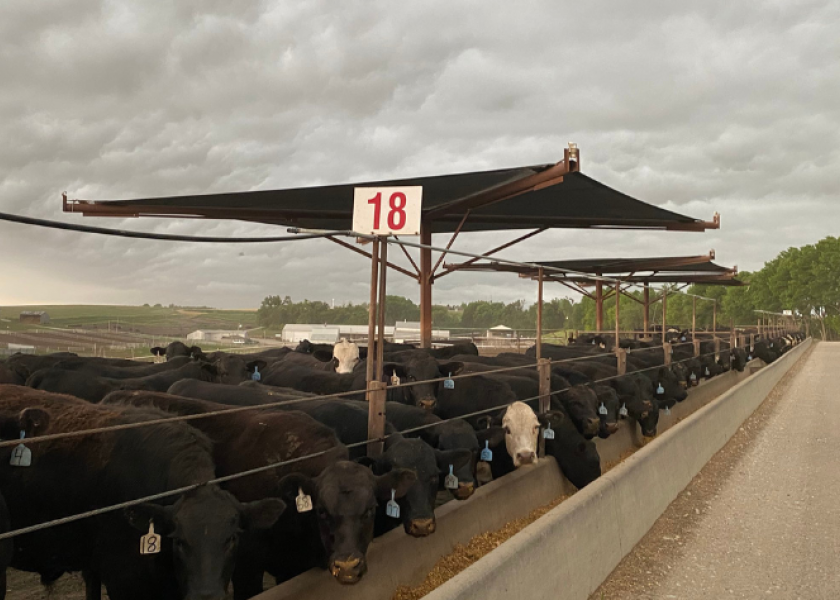Minimize Cattle Losses: Strategic Deployment of Heat Abatement Strategies

With headlines of 'cattle dead in Kansas' across the media, cattle producers understand how important it is to prepare and mitigate the risk of these weather events.
With a forecast of more high temperatures and humidity within the next 10 to 14 days, finding ways to decrease the chances of cattle loss is front of mind for ranchers and feedlot owners and managers.
The following is a list of strategies to reduce the impact of heat stress on cattle in the feedlot with suggestions for sequential deployment. Strategies listed under preparation are intended to be deployed early within 10 to 14 days of the initial heat event forecast. Strategies listed under remediation are intended to be deployed as the heat event proceeds.
Preparation
10-day weather or Mesonet forecasts are fairly accurate. Watch weather forecasts, start acting on preparation steps and be prepared to remediate the problem.
Windfinder - Wind map & forecast
How so?
- Consider marketing finished or nearly finished cattle
- If unable to market, move finished cattle to pens deemed to be less prone to heat stress (pens with shade, greater wind exposure, greater water access, or where bedding may be delivered easily)
- Avoid receiving cattle during heat event
- Resist temptation to increase feed deliveries or simply reduce feed deliveries
- Increase forage in the diet: Use storm diets or diets with more roughage
- Avoid diets containing fat (adding fat to the diet leads to greater metabolic heat load)
- Assign heat remediation tasks to one lead individual in team. Empower this individual to delegate tasks to other individuals, as appropriate.
- Make plans to do any cattle processing before heat event
- Plan to conduct pen riding and sick cattle pulling in the early morning hours
- Remove any movable barriers to air flow
- If possible, set up shades, but only if 12 ft high and at least 16 square feet of space per head can be shaded
- Add and supply water stock tanks on fence lines away from existing water tanks
- If possible, set up sprinklers and turn them on ahead of heat event
- Plan to have additional water (accessing through local fire department or crop producers) and water wagons on hand
Be prepared to focus remediation efforts on high-priority pens. What would be considered high priority pens?
Cattle displaying one or more of these characteristics:
- Finished or near finished cattle
- Black cattle that haven't shed winter coats
- High intake cattle
- Cattle (pen mates) with previous history of digestive or respiratory illness
- Pens with poor wind movement (north slopes, wind breaks, in valleys)
- Pens with no shade
- Pens with restricted water access or poor water flow
- Pens with no sprinklers
Remediation - (In addition to preparation steps outlined above) with a focus on high-priority pens:
- Conduct pen riding and cattle pulling in the early morning hours
- Retain sick or compromised cattle in bedded or shaded hospital pens
- If cattle processing, loading or unloading must occur, defer to cooler hours of the day
- Reduce morning feed delivery
- Resist increasing feed deliveries or lower feed deliveries
- Consider adding an extra 10 percentage units of roughage to finishing diet or continue feeding storm ration delivery (remove diets containing fat)
- Dam a segment of feed bunk and deliver water within this segment
- If practical, blow ground stalks or straw or roll out straw or stalk bales on pen surface to insulate heat reflection from pen surface (about 10 to 20 square feet per head)
As the summer heat is likely here to stay for the next few months, look at your operation and create a game plan to help your cattle cope with the summer temps.
Compared to a feedlot, cow-calf operations manage heat stress in similar ways, yet differ slightly due to the cattle environment and what mitigation options are available.
Be proactive on your operation. The industry doesn't need more 'dead cows' or 'cattle dead' media attention.







